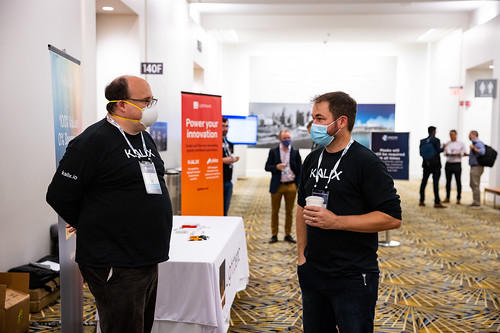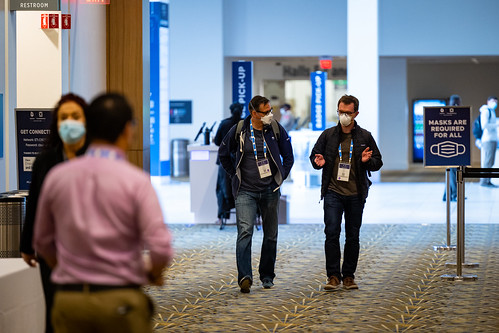october 25, 2022
huntington place, detroit, mi
#ReactiveSummit
Thank you for Attending
That’s a wrap on Reactive Summit 2022! Thank you to all the attendees and speakers that joined us this year, both in-person and virtually!
Registered attendees may access the event platform for 30 days where you can view session recordings. We will also migrate all session recordings to our YouTube channel.
Review session slides from speakers who provided them via the event schedule.
Reactive Summit is where application architects and developers go to learn and collaborate on the latest Reactive patterns and projects for building distributed systems using Serverless, Cloud Native Design, Reactive programming, Reactive systems, Reactive Streams, event-sourcing, microservices, and more.
Since its inception in 2016, Reactive Summit has generated 1.8 million minutes of online video replay, reinforcing the desire of our cutting-edge community for access to expert insight.
The Onsite Experience
Featured Keynote Speakers
-

Jonas Bonér is the founder and CEO of Lightbend, creator of the Akka project, initiator and co-author of the Reactive Manifesto and the Reactive Principles, and a Java Champion. Learn more at: http://jonasboner.com.
-

Hugh McKee is a developer advocate at Lightbend. He has had a long career building applications that evolved slowly, inefficiently utilized their infrastructure, and were brittle and prone to failure. Hugh has learned from his past mistakes, battle scars, and a few wins. And the learning never stops. Now his focus is on helping developers and architects harness the power of the cloud. Hugh frequently speaks at conferences around the world. He is the author of Designing Reactive Systems: The Role Of Actors In Distributed Architecture.
-

Mary is a Java Champion and a passionate Streaming Developer Advocate at DataStax, a leading data management company that champions Open Source software and specializes in Big Data, DB-as-a-service, Streaming, and Cloud-Native systems. She spent 3.5 years previously as a very effective advocate at IBM, focusing on Java, Jakarta EE, OpenJ9, Open Source, Cloud, and Distributed/Reactive Systems. She transitioned from Unix/C to Java around 2000 and has never looked back since then. She considers herself a polyglot and loves to continue learning new and better ways to solve real-life problems. She is an active tech community builder outside of her day job, and is currently the President of the Chicago Java Users Group (CJUG), as well as a co-organizer for several IBM-sponsored meetup groups in the Greater Chicago area.
-

Byron is currently the Director of Developer Relations at Synadia. Prior to joining Synadia, he spent 14 years building software and systems in support of pediatric biomedical research. Outside of work, Byron enjoys running, cooking, yard work, and spending time with his wife and two daughters.
-
 Reid Spencer Vice President of Technology, Improving
Reid Spencer Vice President of Technology, Improving
schedule at-a-glance
All times are shown in Eastern Daylight Time (EDT), UTC-4.
| Tuesday, October 25 | 9:00 AM – 5:00 PM Keynote & Breakout Sessions |







